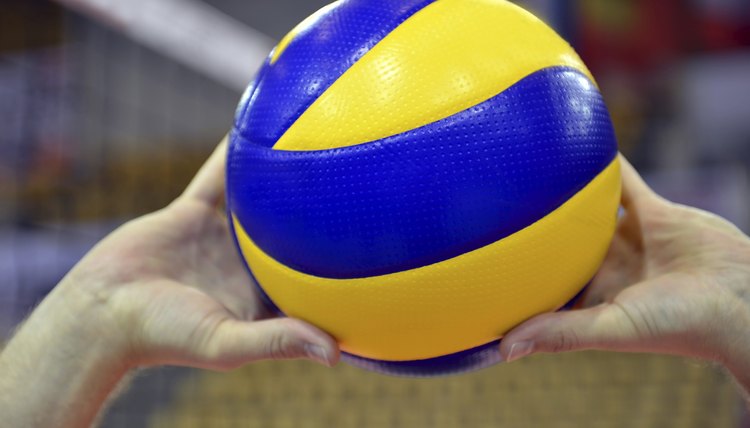Volleyball Setter Rules

Volleyball setters use their hands to hit the ball and put it in good position for the hitter or attacker to spike it into the opponent’s court. Setting requires specialized training and practice. As a setting specialist or a player often relied upon to set, you should remain informed about all rules that apply to setting.
Violations
You cannot hit the ball twice during a set. Such “double hits” will cost your team a point. As a back row setter, you cannot block or attack the ball or hit the ball at all above the net. You cannot jump up to hit the ball with your body elevated above the top of the net. Blockers or hitters on the opposing team might try to force you to illegally block the ball by hitting the ball into your hands while they remain positioned above the net. Contacting the ball with your body above the net constitutes an illegal block. If you touch the ball at the same time as a blocker on the opposing team, you also commit an illegal block.
Setting to a Blocker
You can also force blockers on the opposing team to commit violations. If the ball remains clearly on your side of the net, you can set the ball to blockers with their hands over the net to force them to commit an illegal block. If blockers contact a ball set from the setter’s side, they commit a violation and their team loses the point.
Libero Setting
According to Volleyball.org, the libero position has existed in competitive volleyball since 1998. The libero, a defensive specialist, must remain in the back row and cannot attack the ball or contact the ball above the top of the net. The libero also cannot serve. Specialized rules also apply to the libero’s setting abilities. If the libero stands with one or both feet touching the attack line or positioned in front of the attack line, he cannot set the ball with his hands to a hitter so that the hitter contacts the ball above the net. Liberos can set with the hands from the back of the court in any situation. Liberos can also set with the hands from the front of the court as long as the hitter does not take the ball above the net.
References
Writer Bio
Lisa Porter began writing professionally in 2009. She writes for various websites and has a Bachelor of Arts in English literature.
